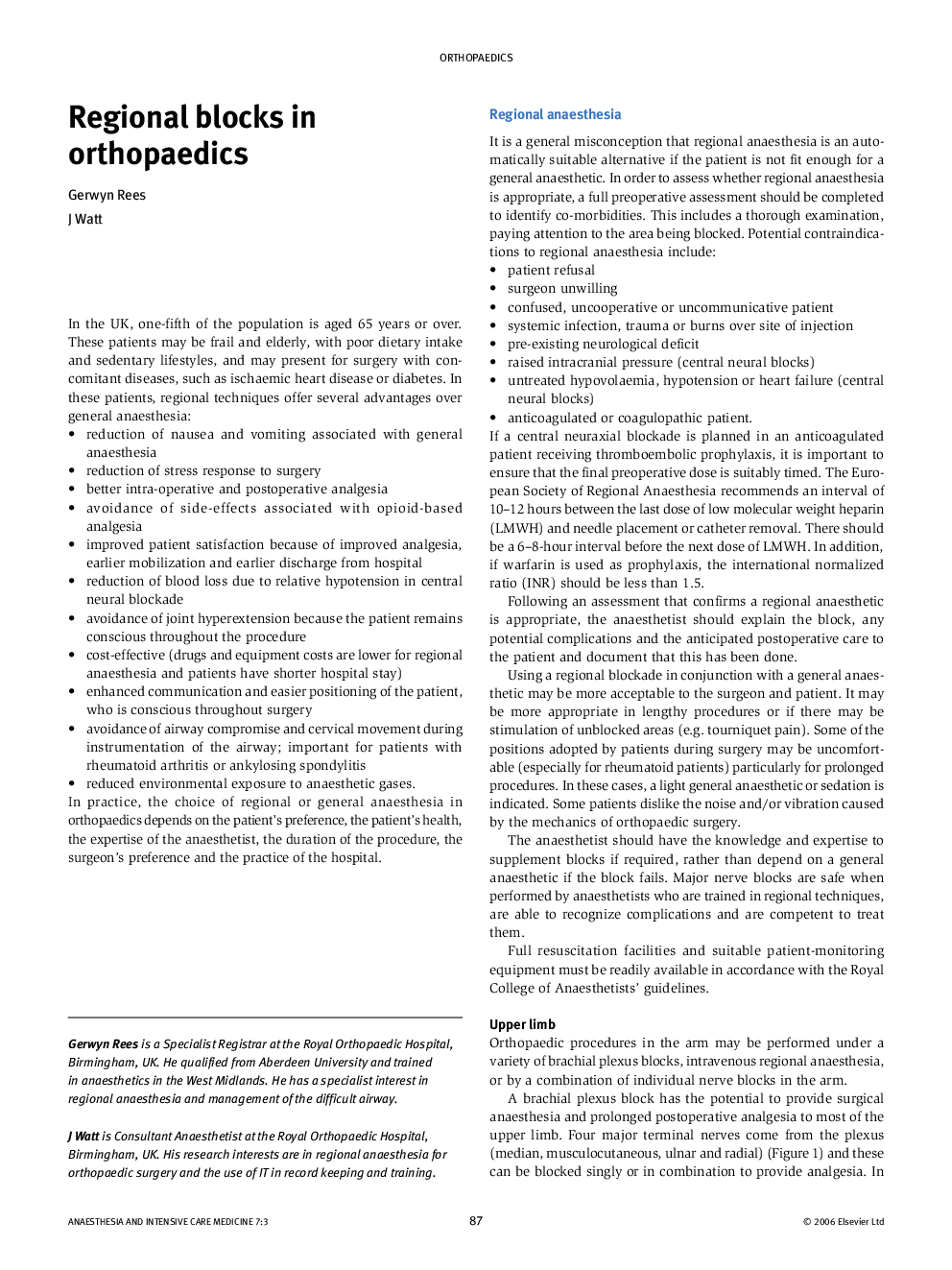| کد مقاله | کد نشریه | سال انتشار | مقاله انگلیسی | نسخه تمام متن |
|---|---|---|---|---|
| 2743948 | 1148721 | 2006 | 4 صفحه PDF | دانلود رایگان |

Orthopaedic surgery is an expanding surgical specialty with a potentially difficult patient population. Regional anaesthesia is becoming increasingly popular as it offers several advantages over general anaesthesia. Consider the following when deciding if a patient is suitable for regional anaesthesia: possible contradictions should be excluded and full consent obtained after an explanation of the intended procedure; the patient's comfort in a noisy theatre environment for a prolonged period of time; a combination of a regional technique with sedation or a general anaesthetic is possibly indicated; the surgeon's preference; the patient's health; the duration of the intended procedure; the practice pattern of the hospital; and the expertise of the anaesthetist. Regional anaesthesia is best done by anaesthetists who are knowledgeable in the anatomy and nerve distribution, and have the dexterity to perform the necessary techniques. For upper limb surgery, interscalene blocks are ideally suited for shoulder and upper arm surgery, suprascapular nerve blocks for upper arm, elbow and radial side of forearm, and the infraclavicular and axillary block for hand, wrist and forearm surgery. Individual nerve blocks are best suited to a localized surgery of the hand, but do not cover tourniquet sites. Lower extremity surgery can be blocked centrally. However, it is associated with significant complications and possible bowel and bladder disturbance and bilateral limb immobility. For hip surgery a lumber plexus block offers many advantages. The three-in-one block is usually ineffective because it does not reliably block the lateral cutaneous nerve or the obturator nerve. For knee replacement surgery both femoral and sciatic nerve blockades are indicated, and the insertion of catheters is becoming more common. This offers much improved analgesia and earlier mobilization. Increased knowledge and practice in regional techniques has the benefit of improving analgesia and mobilization, shortens hospital stay and therefore has many advantageous cost implications as well as improving overall quality of care.
Journal: Anaesthesia & Intensive Care Medicine - Volume 7, Issue 3, 1 March 2006, Pages 87-90